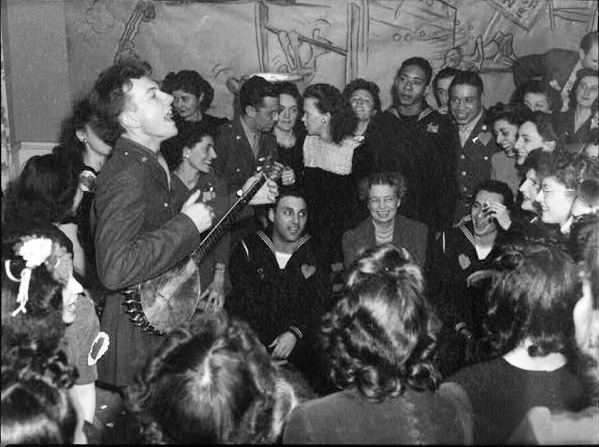Today is the birthday of Walt Whitman (1819-1892), a free spirit easily acknowledged as a most extraordinary poet in our history. His life bridged the American experience from the early Romantic period in literature to the advent of hard realism as the end of the century approached. I'm not sure what presence he has these days in the public school systems across the country but baby boomers - born between 1946 and 1964 - had a full dose of his poetry beginning in elementary school. For more information on Whitman, including an extensive biography, visit the outstanding resources at the Walt Whitman Archive.
 |
| Whitman in 1887 |
Much of Whitman's poetry has been set to music. Sometimes the blend of music and existing poetry has limited success and authors often do not think favorably of such adaptations. I think Whitman would have approved especially with the music coming from a fellow impressionist, in this case Frederick Delius. This composition has been a personal favorite for forty years.
Miracles
Walt Whitman, originally published as Poem of Perfect Miracles in 1856, revised 1881
As to me I know of nothing else but miracles,
Whether I walk the streets of Manhattan,
Or dart my sight over the roofs of houses toward the sky,
Or wade with naked feet along the beach just in the edge of the water,
Or stand under trees in the woods,
Or talk by day with any one I love, or sleep in the bed at night with any one I love,
Or sit at table at dinner with the rest,
Or look at strangers opposite me riding in the car,
Or watch honey-bees busy around the hive of a summer aforenoon,
Or animals feeding in the fields,
Or birds, or the wonderfulness of insects in the air,
Or the wonderfulness of the sundown, or of stars shining so quiet and bright,
Or the exquisite delicate thin curve of the new moon in spring;
These with the rest, one and all, are to me miracles,
The whole referring, yet each distinct and in its place.
To me every hour of the light and dark is a miracle,
Every cubic inch of space is a miracle,
Every square yard of the surface of the earth is spread with the same,
Every foot of the interior swarms with the same.
To me the sea is a continual miracle,
The fishes that swim—the rocks—the motion of the waves—the ships with men in them,
What stranger miracles are there?
Sources
Photos and Illustrations:
public domain photo, George Collins Cox, restored by Adam Cuerden, Library of Congress Prints and Photographs Division
Text:
poem, thespectrum.com




















